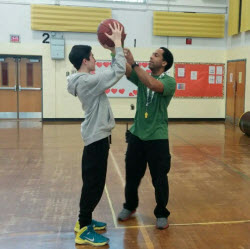At Quibbletown Middle School we are trying to create a healthier overall school environment. Our 2015-2016 school year has started and we are off to a great start! Coming into the school year we introduced a few new ideas in an effort to keep our students active and moving outside of their regular physical education classes. As a teaching staff we first brainstormed some possible new ideas and eventually came up with two pretty cool ways to get our kids going. One was a no-brainer and the other raised (and still raises) quite a few eyebrows!

Brain Breaks and Energizers
Our first and simplest idea was the implementation of more brain breaks and energizers throughout the school day. Not all of our teachers are onboard yet, but this year we’ve convinced more teachers to embrace the value of integrating brief periods of physical activity into the classroom than in the past. To encourage buy-in, the school’s physical education teachers have offered to tailor these brain breaks and energizers towards specific classes and subject matter.
For example, some of our social studies teachers have taken their classes on virtual field trips. These trips have students standing in their classrooms and climbing the Great Wall of China, then swimming to Australia where upon arrival they hop like kangaroos, and so on! While moving the students continue to get information on each of these continents during their global studies unit. GoNoodle has also been a very useful tool for us when trying to get our students active during their non-physical education classes. Teachers can sign up at www.gonoodle.com and create class lists where groups can compete against one another to see who has the most moving minutes. There are several types of channels with different activities and methods of movement that are sure to keep kids interested. Anything and everything from Zumba to running steeplechase races are available for free to teachers.

